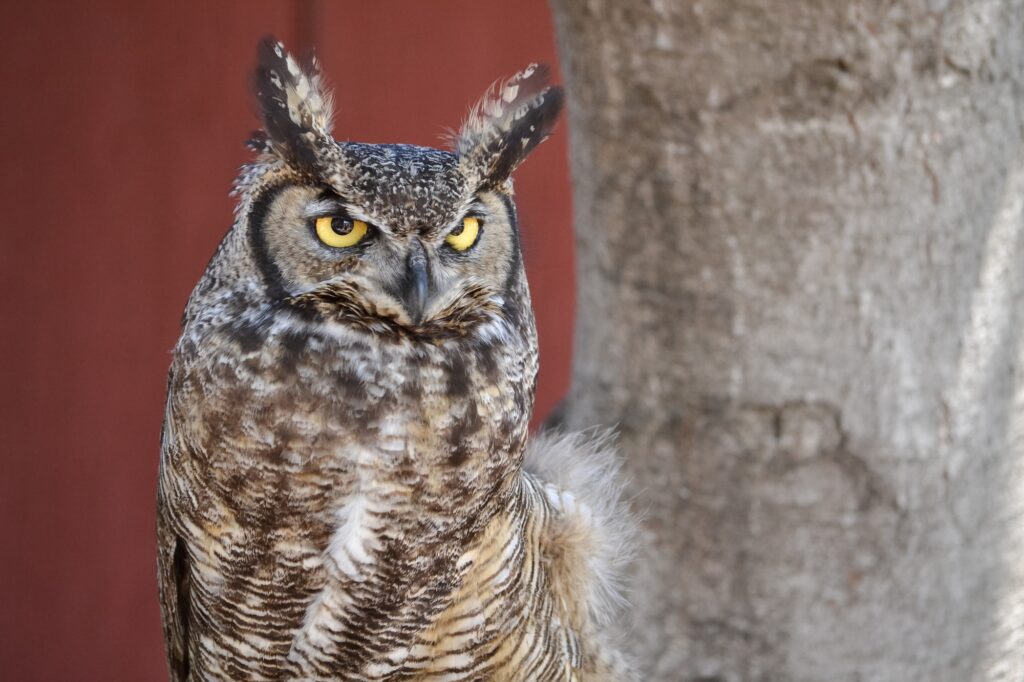Nicknamed the Sooner State, Oklahoma has 487 bird species. Some of them stay year-round, whereas others come around only during the winter.
So, what is it about Oklahoma that makes it attract such a wide variety of birds?
The topography is one reason. There are 10 distinct geographic regions in this midwestern state. In fact, more than 24% of Oklahoma is forest. Add to that the 11,000 miles of shoreline, mountain ranges, and meadows, and you have the ideal environment.
Another reason is its temperate climate. With mild winters and hot summers, Oklahoma is the perfect sanctuary for many bird species. Among them are the majestic owls. Today, we’re bringing you a list of the nine different types of owls in Oklahoma.
Let’s get started.
Great Horned Owl
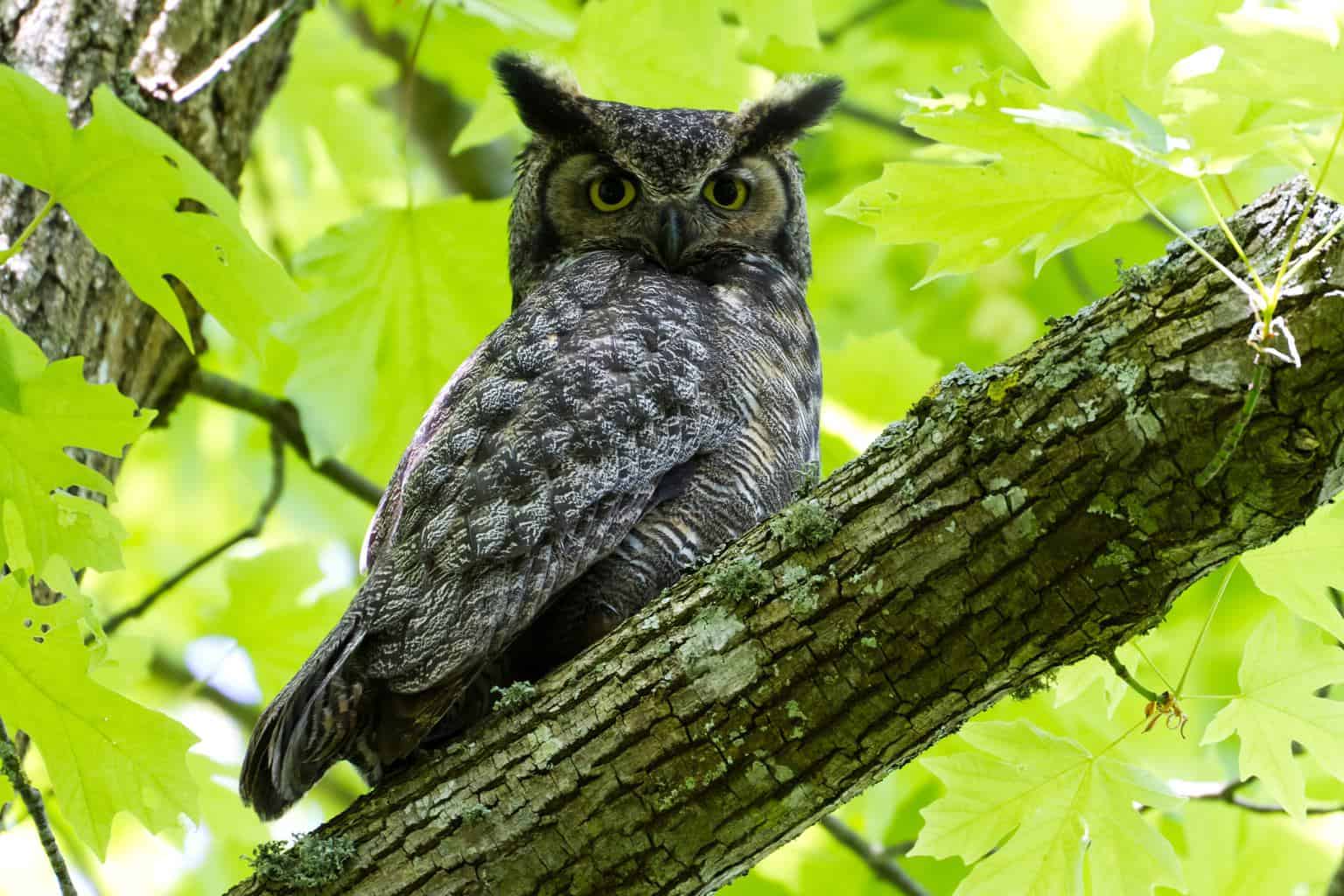
- Scientific Name: Bubo virginianus
- Length: 17 – 25 in
- Weight: 2.5 – 4 pounds
- Wingspan: 3 – 5 feet
The Great Horned Owl is one of the largest and scariest-looking raptors you’ll come across. True to its name, it has prominent feather tufts that stick up and resemble horns. And don’t forget those piercing eyes. This is one bird you don’t want to mess with.
This nocturnal predator is one of the largest and heaviest owl species. What’s even more interesting is that the females are generally larger than the males. To maintain their large bodies, they hunt large animals. Their diet usually consists of rabbits, groundhogs, large birds, and even other raptors.
Fun fact: Great Horned Owls have an extremely weak sense of smell. Yet, their keen vision and stealth-mode flying more than compensate for it.
American Barn Owl
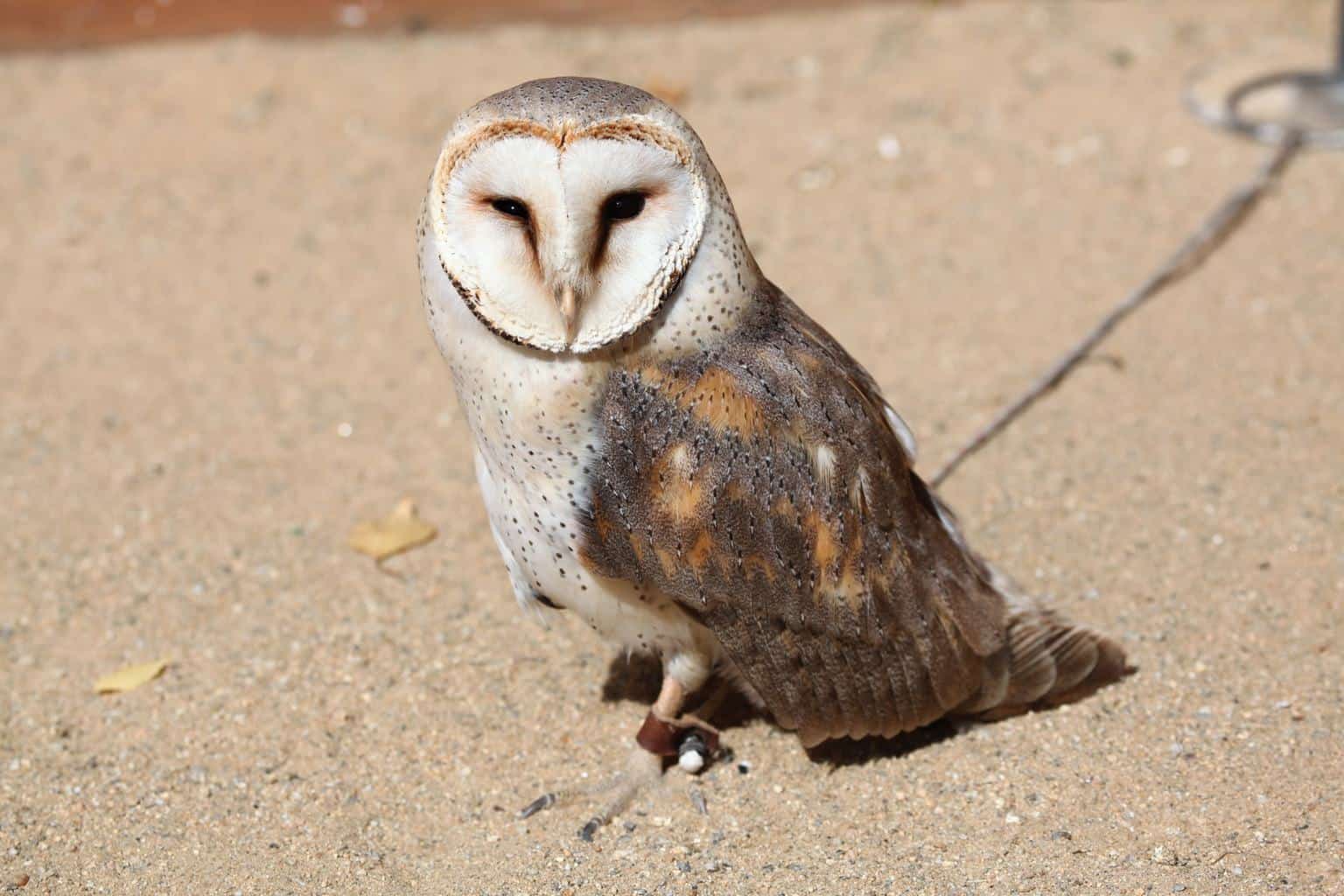
- Scientific Name: Tyto furcata
- Length: 11 – 17 in
- Weight: 9 oz – 1 pound
- Wingspan: 39 – 49 in
The Barn Owl has a unique heart-shaped face. This distinct shape boosts its hearing and makes it one of the best night hunters known to man. Their hearing is so good that Barn Owls can easily locate even small prey under thick foliage or snow. They like hunting rodents, small birds, as well as reptiles and insects.
Another noticeable feature is their near-silent flight capabilities. Even bats don’t know they’re coming for them, which is pretty impressive.
American Barn Owls are year-round permanent residents of Oklahoma. They build their nests in barns, farmlands, and meadows.
Fun fact: unlike most other owl species, male Barn Owls don’t hoot when trying to impress a female. Instead, during the mating season, they clap their wings several times in mid-flight.
Barred Owl
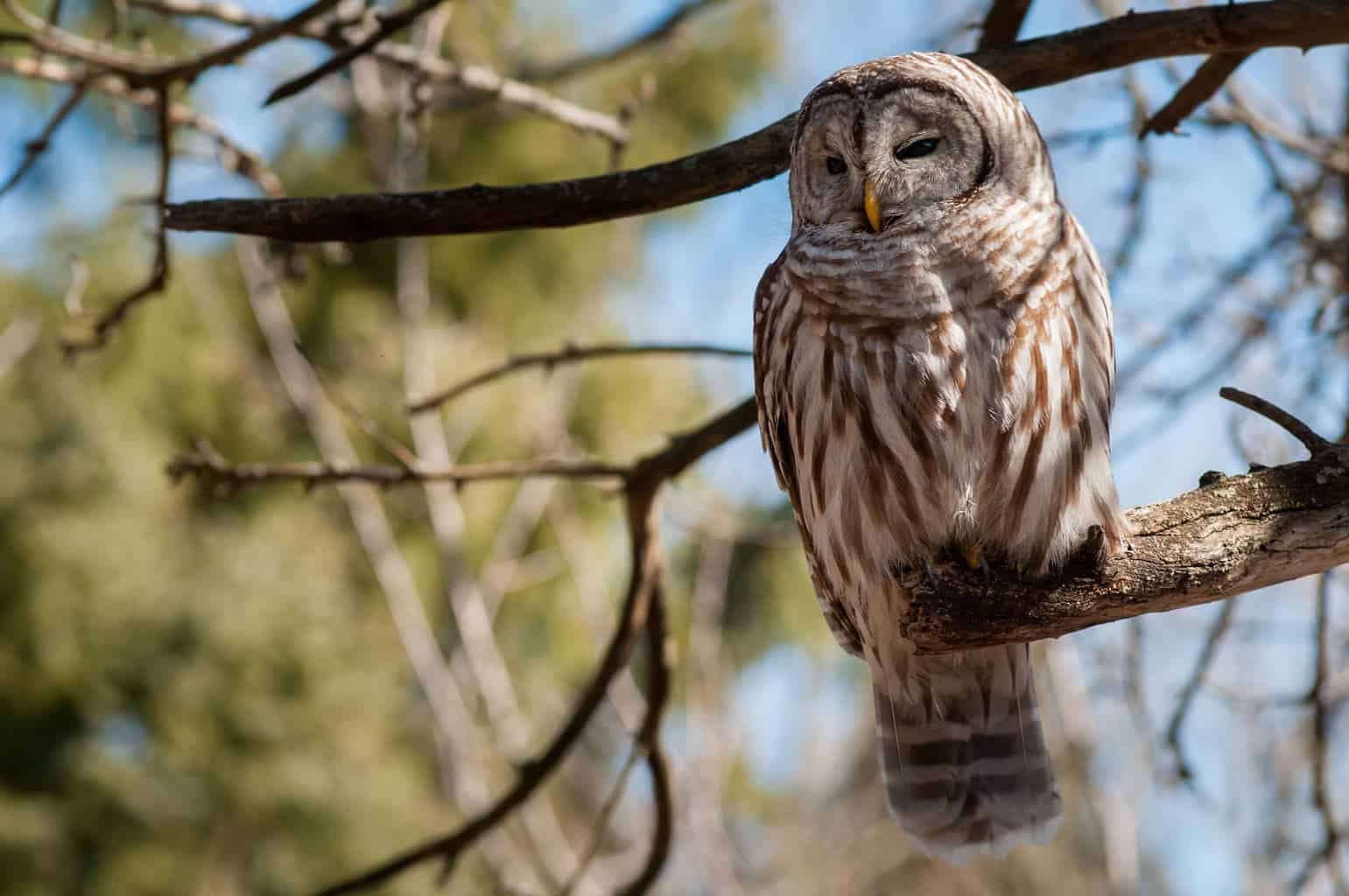
- Scientific Name: Strix varia
- Length: 16 – 25 in
- Weight: 1 – 3 pounds
- Wingspan: 38 – 49 in
The Barred Owl is also known as the Hoot Owl. These night-time predators have horizontal stripes running down their backs and across their wings which help them blend in with their surroundings.
This migratory species of bird make for an intimidating predator as it swoops down with its wings spread out. Its diet mainly consists of small mammals, birds, and even insects and reptiles.
Because they like a wide variety of prey, their habitat is quite diverse. Still, they like to set up their nests in mature evergreen or deciduous forests, preferably near water.
Fun fact: Barred Owls are curious by nature. They’re not easily fazed. One reason could be because they’ve adapted to urban areas and are used to being around people.
Short-Eared Owl

- Scientific Name: Asio flammeus
- Length: 13 – 17 in
- Weight: 7 – 17 oz
- Wingspan: 33.5 – 40.5
Short-eared Owls use their short clumps of feathers when they want to appear menacing. Their Latin name, flammeus, refers to the flame-colored feathering on their underwings.
During winter, you can spot Short-eared Owls in various regions across Oklahoma. They commonly set up their nests in meadows, grasslands, and open fields where they can easily catch food. Their diet consists mostly of voles, which is their favorite meal. If they’re near water, they’ll hunt seabirds and fish.
Short-eared Owls mostly hunt during the daytime. Yet, they’re known to be both nocturnal and crepuscular, which means they’re also active at both dusk and dawn.
Fun fact: When trying to keep predators away from their nests, parents will often poop on the eggs. Then, they fly away in a further attempt to lure predators away.
Long-Eared Owl
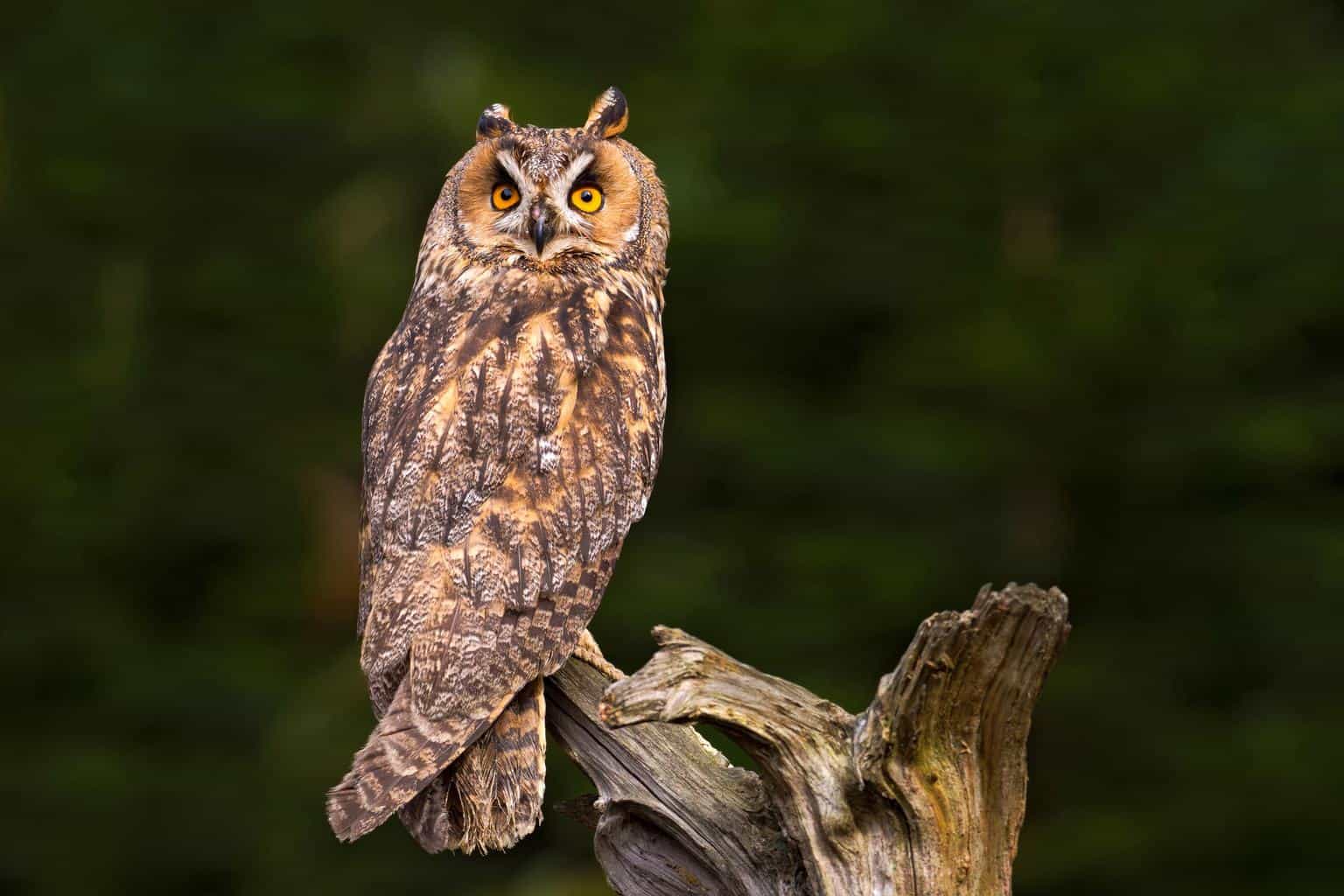
- Scientific Name: Asio otus
- Length: 14 – 16 in
- Weight: 8 – 15 oz
- Wingspan: 35 – 39 in
Long-eared Owls go by many names. The most famous is Cat Owls because of their catlike features. As their name suggests, Long-eared Owls have long clumps of feathers that look like cat ears. They give them a surprised look on their face.
Not only are these raptors nocturnal, but they’re extremely secretive. They prefer roosting in areas with dense foliage so they remain tucked away out of sight.
When it comes to hunting, however, they can venture out to open grasslands and fields. This is the best chance for an avid bird watcher to catch a glimpse of a Long-eared Owl as it zooms overhead in search of food.
Their preferred meal is the humble vole. However, they occasionally hunt other small rodents and birds.
Fun fact: Long-eared Owls are one of the few raptors that live in groups, called parliaments. They also share roosts, which is rare for most owls.
Western Screech-Owl
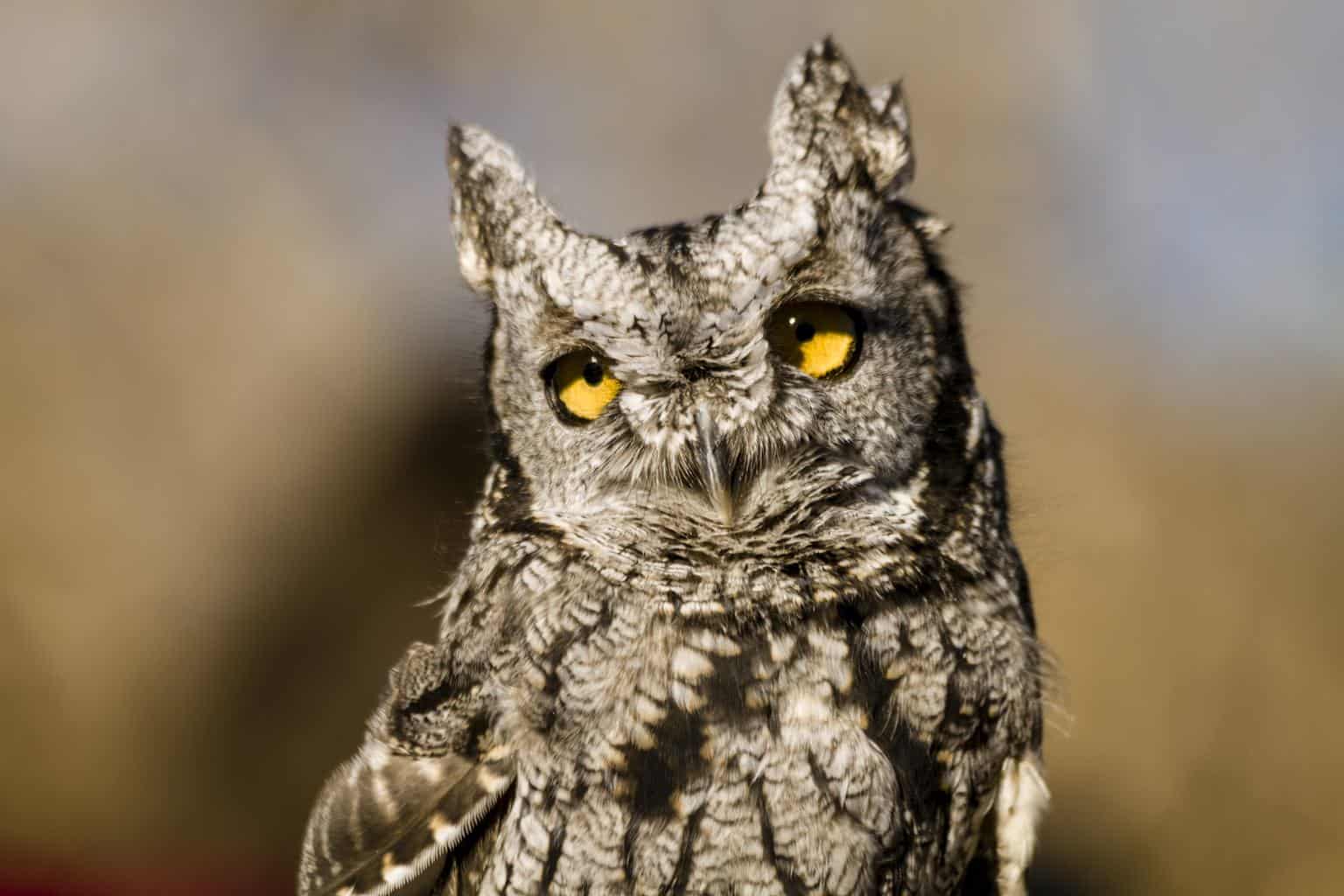
- Scientific Name: Megascops kennicottii
- Length: 7.5 – 10 in
- Weight: 3.5 – 11 oz
- Wingspan: 22 – 24 in
One of the distinctive features of Western Screech-Owls is their coloring. Some have dark brown feathers, whereas others are covered in bluish-gray feathering.
These nocturnal raptors prefer to set up their nests in and around farm fields and suburban areas. They also like to be near bodies of water. Typical to all Screech Owls, this species doesn’t migrate. You can spot them year-round in Oklahoma.
When it comes to their diet, Western Screech-Owls primarily stick to small birds and rats. They hunt invertebrates, amphibians, and fish, as well.
Fun fact: The Western Screech-Owl call isn’t a high-pitched hoot like other owls. Rather, it has a rather pleasant and distinct trill, a common sound in the fields of Oklahoma.
Eastern Screech Owl
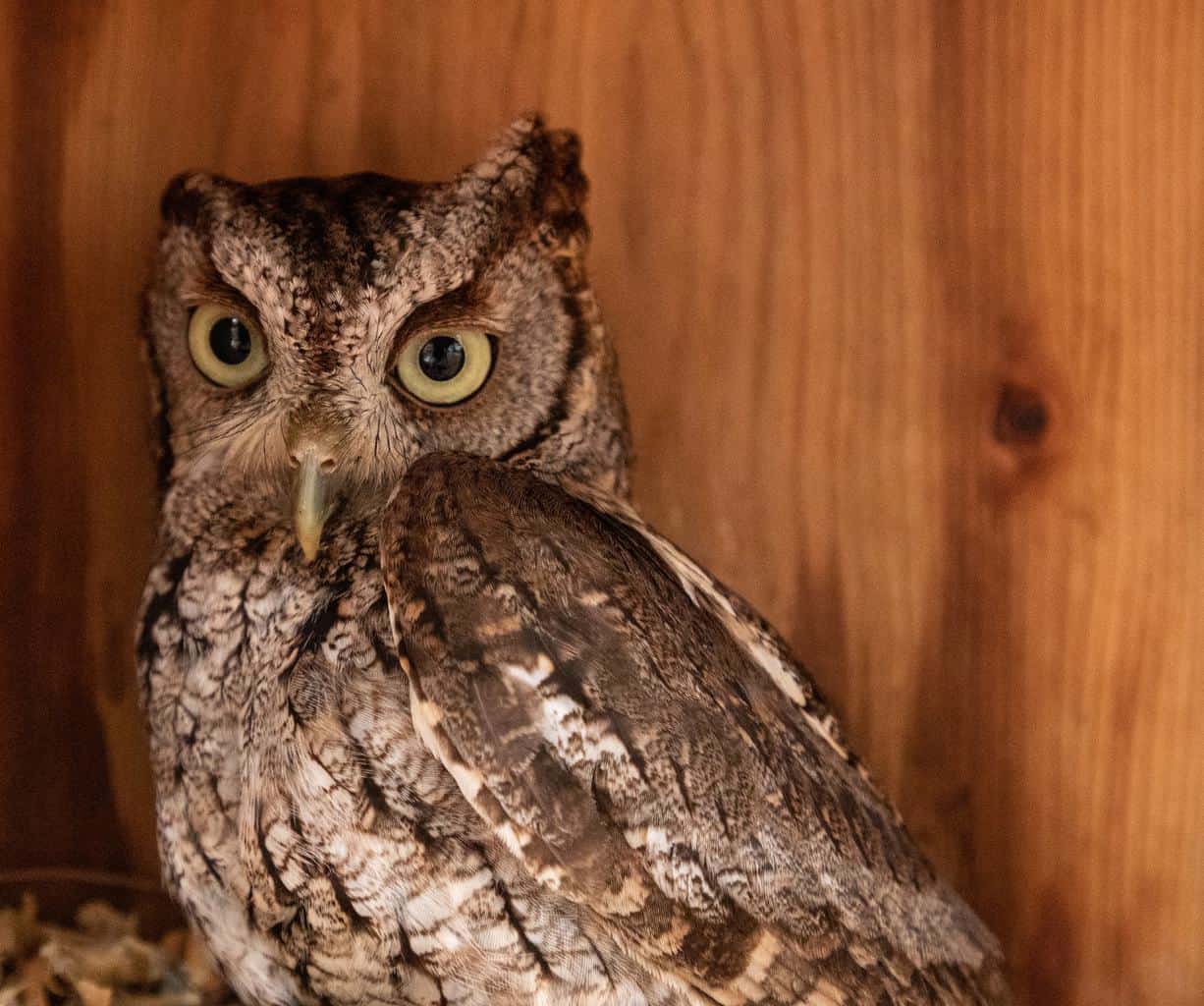
- Scientific Name: Megascops asio
- Length: 6 – 10 in
- Weight: 4 – 9 oz
- Wingspan: 18 – 24 in
The Eastern Screech Owl is a year-round resident of Oklahoma. They’re short and look like a heavy-built wrestler. Besides their stocky appearance, they also have tufts of feathers that look like short, stubby ears. They use these fake ears to communicate with other owls.
These nocturnal raptors typically like to set up their nests in wooded areas, although, they have been known to nest in buildings with heavy foot traffic or next to highways. As long as they’re comfortable, they don’t mind the hustle and bustle around them. The one major thing they try to avoid is any area populated by other owls, especially those larger than they are.
Fun fact: Eastern Screech Owls are what’s known as opportunistic hunters and have the widest range of diet. They don’t exert much effort when hunting for food.
Snowy Owl
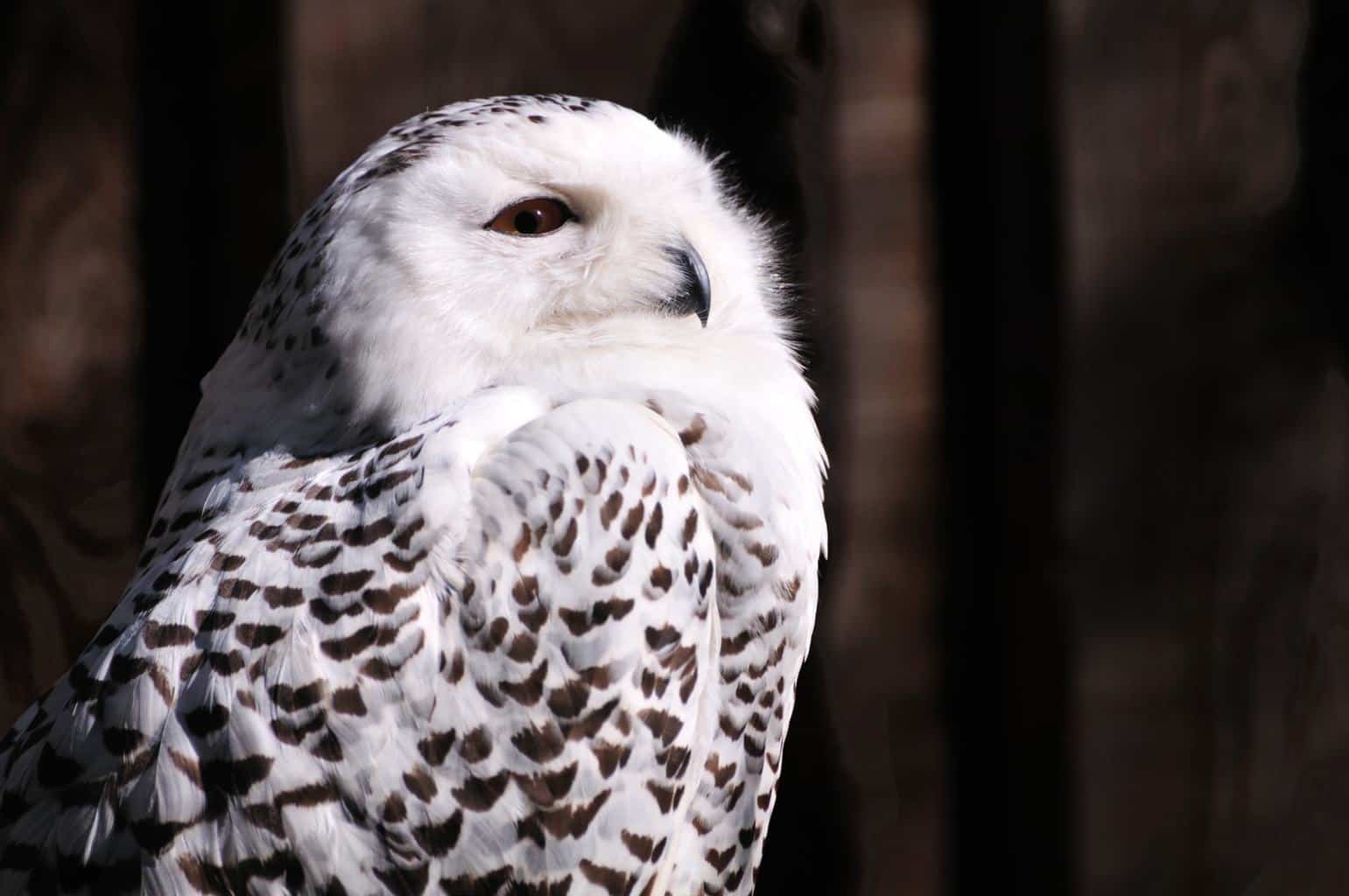
- Scientific Name: Bubo scandiacus
- Length: 21 – 25 in
- Weight: 3 – 4 pounds
- Wingspan: 48 – 60 in
Snowy Owls have got to be the most magnificent-looking raptors of all. This beautiful animal’s stunning white plumage gives them an almost regal air about them.
During winter, once the breeding season is over, they fly south from the Arctic to Oklahoma, where they set up their nests. They prefer open habitats with few trees.
Snowy Owls are one of the few diurnal species. They’re great at hunting both during the day and at night.
Their diet covers a wide range of food. Their prey includes larger animals ducks, squirrels, as well as rodents, and rabbits.
Fun fact: similar to other owl species, Snowy Owls are experts at sensing prey from quite a far distance. Yet, what makes them unique is their ability to dive deep into the snow to snatch their victims.
Burrowing Owl
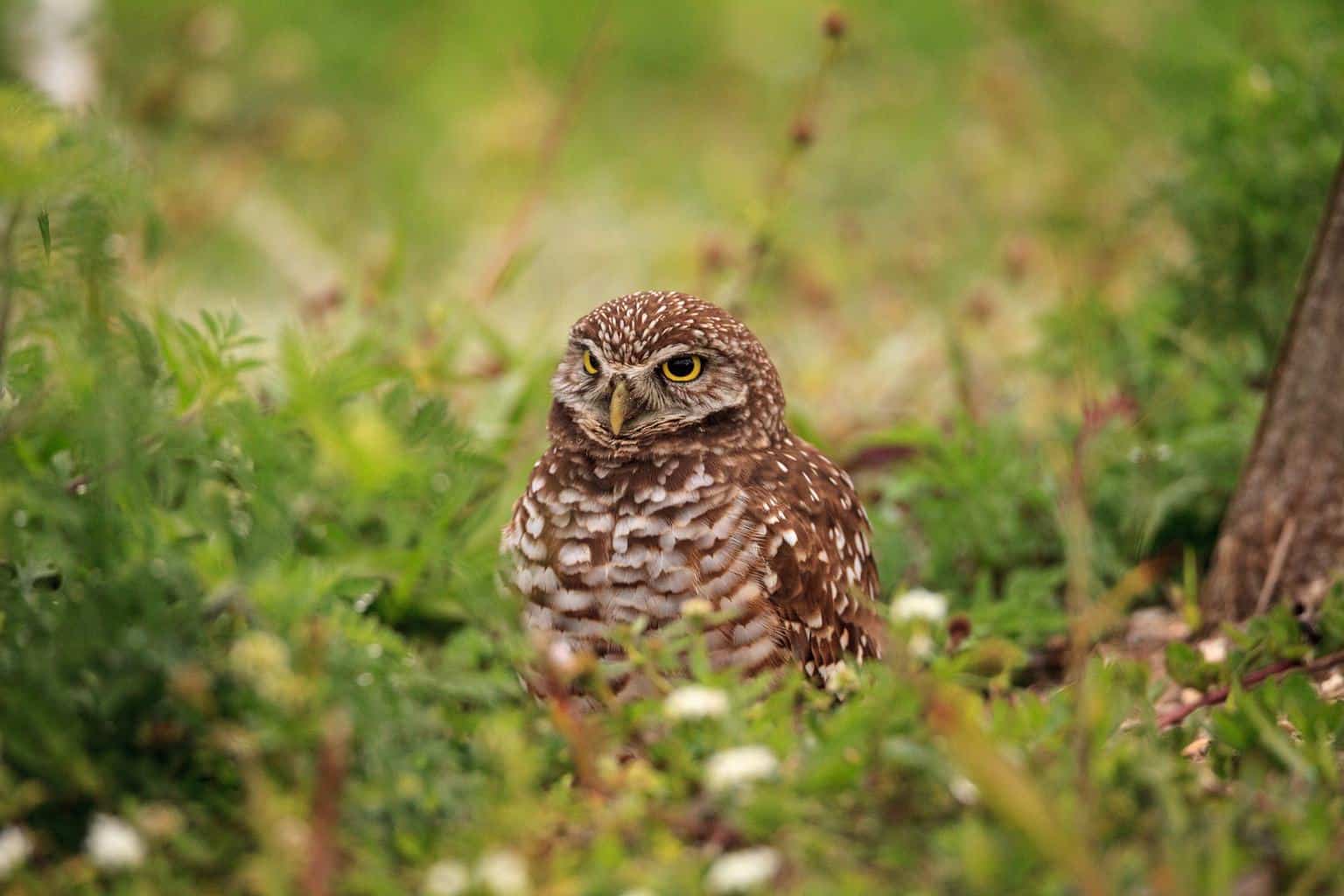
- Scientific Name: Athene cunicularia
- Length: 7.5 – 11 in
- Weight: 5 – 8.5 oz
- Wingspan: 20 – 24 in
The first thing you notice about Burrowing Owls is their scowl. Their bushy white feather eyebrows and penetrating gaze also add to their intimidating look. These diurnal raptors have brown or tan feathers. Their chests are covered with stripes and pale-colored spots.
Being more active during the day makes it easier to find food in open fields, grasslands, and meadows. Yet, rather than flying overhead in search of food, Burrowing Owls prefer being on the ground. Their small-sized body and long legs help them maneuver quietly as they search for food. They mainly hunt rodents, insects, and reptiles.
Fun fact: Burrowing Owls get their names because they prefer living underground. They usually just take over burrows already dug out by other animals, like the prairie dog. This is a unique species of owl that really “digs” its home.
Conclusion
These nine species of owls in Oklahoma are a wondrous sight. Their variety of sound and highly tactical hunting techniques are impressive, to say the least.
In addition to these spectacular creatures, other bird species call this midwestern state home as well.
One of these is the fastidious woodpecker of which there are 10 species in Oklahoma. From their unique calls to their amazing strength, woodpeckers are truly magnificent.
That’s not all! Oklahoma is also home to nine species of hawks. No matter how many times you’ve seen a hawk soar overhead, they always seem to take your breath away!
So, if you’re a bird lover, you should head to Oklahoma, one of the best places in the United States with its wide variety of avian life, and spend some extra time listening for the classic sound of an owl calling in the night. It’s one of the best places in North America to enjoy these majestic creatures up close and personal.

